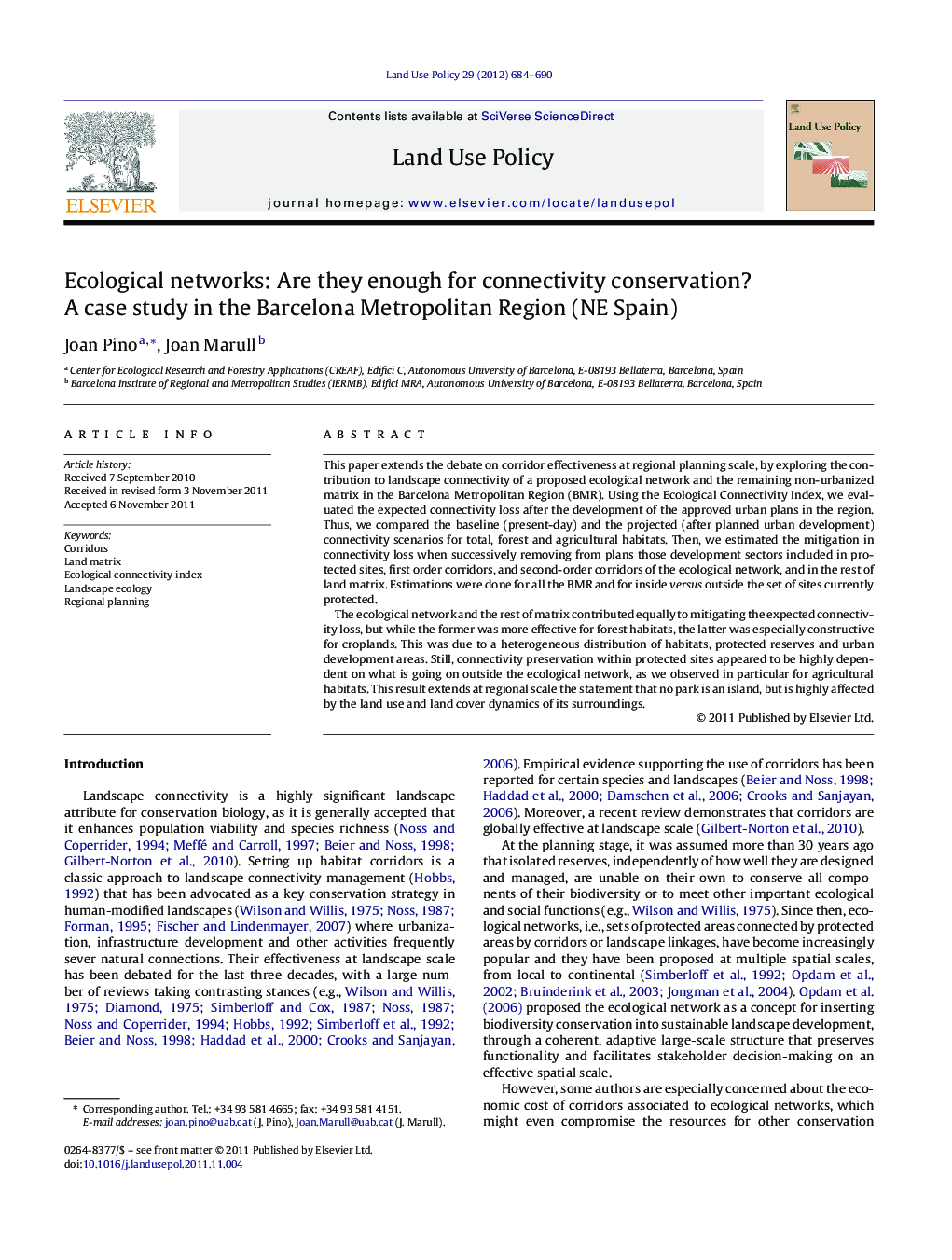| Article ID | Journal | Published Year | Pages | File Type |
|---|---|---|---|---|
| 93298 | Land Use Policy | 2012 | 7 Pages |
This paper extends the debate on corridor effectiveness at regional planning scale, by exploring the contribution to landscape connectivity of a proposed ecological network and the remaining non-urbanized matrix in the Barcelona Metropolitan Region (BMR). Using the Ecological Connectivity Index, we evaluated the expected connectivity loss after the development of the approved urban plans in the region. Thus, we compared the baseline (present-day) and the projected (after planned urban development) connectivity scenarios for total, forest and agricultural habitats. Then, we estimated the mitigation in connectivity loss when successively removing from plans those development sectors included in protected sites, first order corridors, and second-order corridors of the ecological network, and in the rest of land matrix. Estimations were done for all the BMR and for inside versus outside the set of sites currently protected.The ecological network and the rest of matrix contributed equally to mitigating the expected connectivity loss, but while the former was more effective for forest habitats, the latter was especially constructive for croplands. This was due to a heterogeneous distribution of habitats, protected reserves and urban development areas. Still, connectivity preservation within protected sites appeared to be highly dependent on what is going on outside the ecological network, as we observed in particular for agricultural habitats. This result extends at regional scale the statement that no park is an island, but is highly affected by the land use and land cover dynamics of its surroundings.
► Ecological network and the rest of matrix contribute equally to mitigating the expected connectivity loss (i.e., resulting from the development of the approved urban plans) in the study region. ► Due to a heterogeneous distribution of habitats and protected areas, the ecological network and the remaining land matrix are differentially important in preserving the connectivity of the different habitats. ► Connectivity preservation within protected sites is highly dependent on what is going on outside the ecological network, extending at regional scale the statement that no park is an island.
